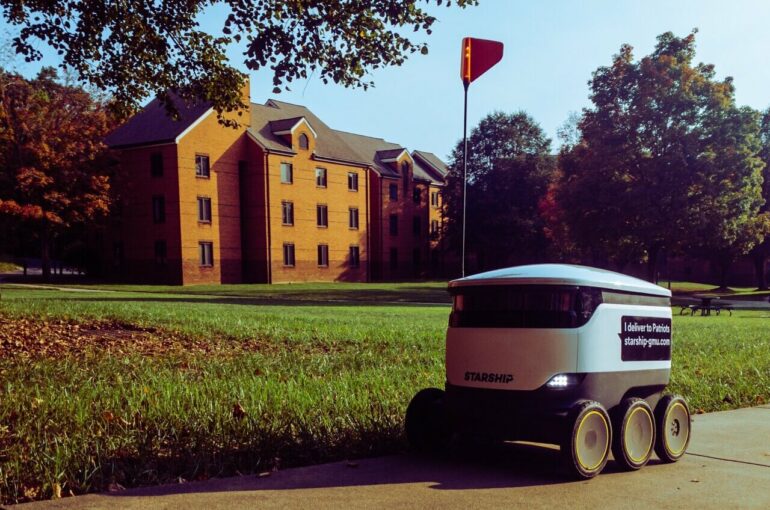A new study has shown that people modify their behavior to accommodate autonomous delivery robots, and it is this invisible “human work” that allows robots to run smoothly on the streets and needs to be considered when designing their routes.
Researchers from the School of Computer Science and Horizon Digital Economy Research at the University of Nottingham, in collaboration with Linkoping University in Sweden and the University of York analyzed human interactions with delivery robots being used in two cities in the U.K. Their findings, published in the Proceedings of the 2024 ACM/IEEE International Conference on Human-Robot Interaction show how these robots are “granted passage” through the streets by the people they encounter.
Delivery robots are being trialed in a number of U.K. cities across the U.K. including Milton Keynes, Manchester, Cambridge and Northampton. They provide deliveries over shorter distances for a range of companies and are powered by artificial intelligence and GPS navigation.
The researchers followed and filmed robots at two locations in Milton Keyenes and Northampton over several days and analyzed their encounters along the route. As well as navigating obstacles like bins, pets and parked cars on the street the robot encountered a number of people or “members of the street.”
The research showed that the robot became an obstacle itself with people constantly making subtle, seemingly insignificant modifications in behavior to allow the robot to continue on its way. Examples include people moving aside to let it pass, a window cleaner pausing his work to allow it to pass and tapping it with his foot to encourage it to move when it slowed or adjusting walking pace to stay behind a robot.
The results were presented at the 2024 ACM/IEEE International Conference on Human-Robot Interaction where the study by authors Dr. Stuart Reeves from the University of Nottingham, Hannah Pelikan from Linkoping University and Marina Cantarutti from the University of York, where it was awarded best paper.
Dr. Stuart Reeves from the School of Computer Science at the University of Nottingham said, “As the use of delivery robots increases it’s important to understand how people interact with them and acknowledge the role people on the street have in making the operation of robotic systems in public possible.
When designing routes and programming robots, designers tend to put the robot at the heart of the space, but what we showed is that for a robot to successfully navigate a route it relies on the accommodation of people for it to be successful and not become an obstacle itself.
Stuart says, “Understanding the unique characteristics of public spaces in which robots are being deployed is essential—and we hope this research can be used by councils and robot designers to help shape the way robot technology and public spaces they use are designed as these technologies evolve and are scaled up.”
More information:
Hannah R. M. Pelikan et al, Encountering Autonomous Robots on Public Streets, Proceedings of the 2024 ACM/IEEE International Conference on Human-Robot Interaction (2024). DOI: 10.1145/3610977.3634936
Provided by
University of Nottingham
Citation:
New study finds invisible ‘human work’ allows robots to make deliveries (2024, March 27)



